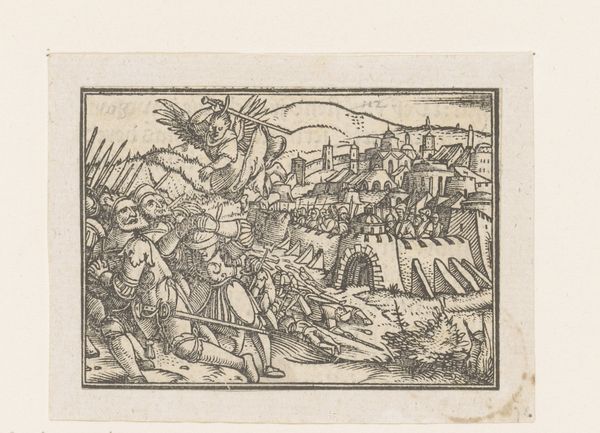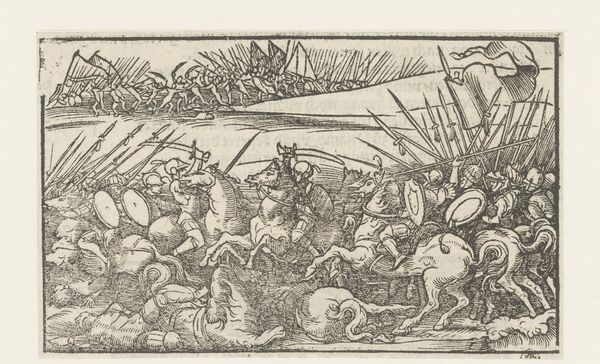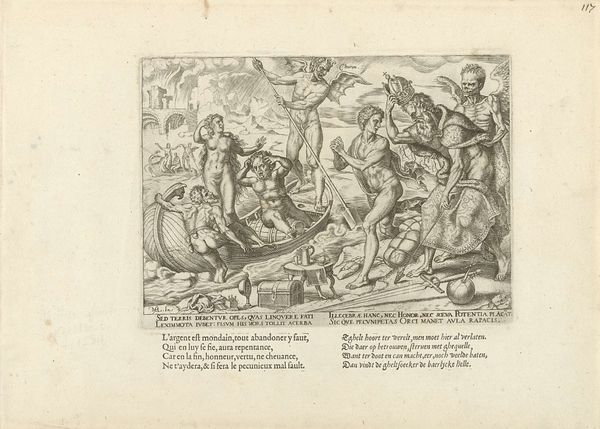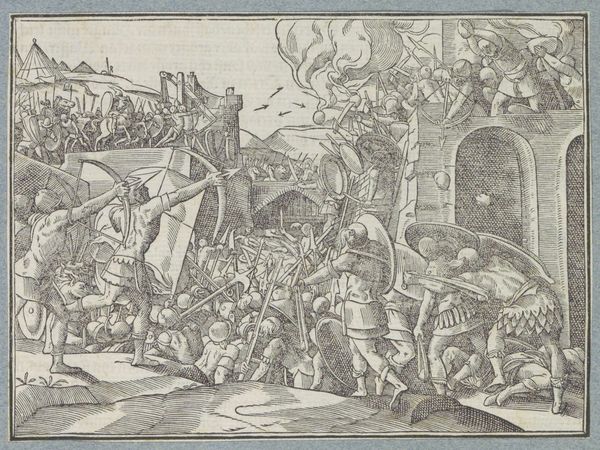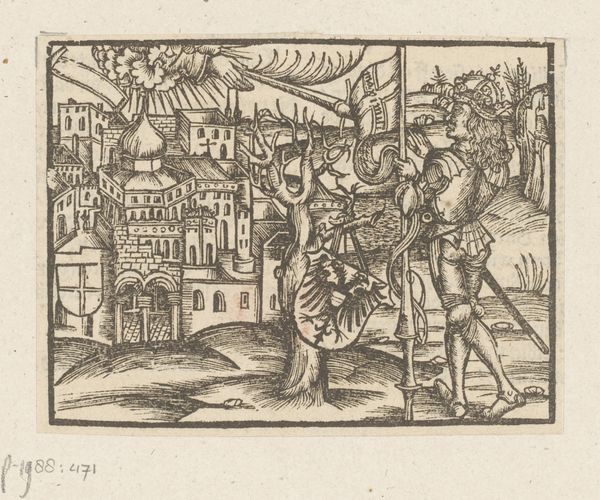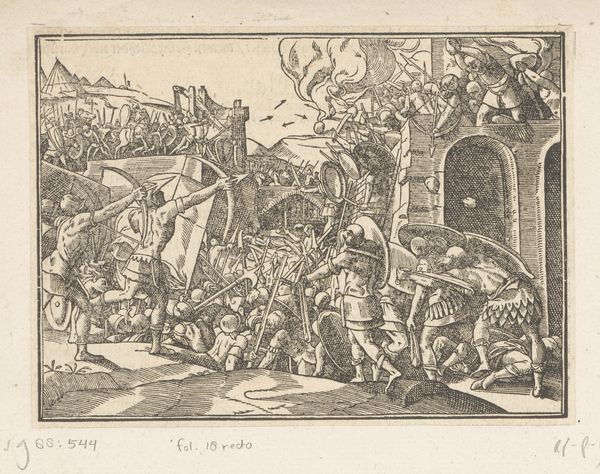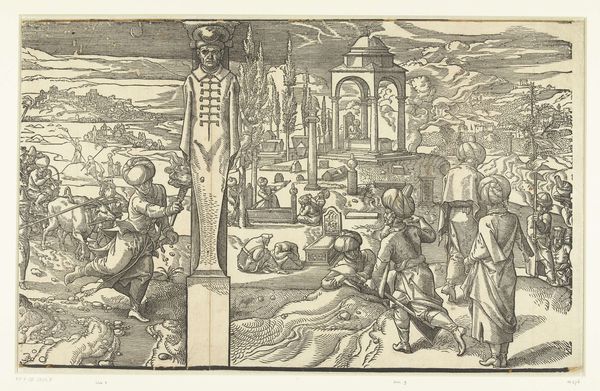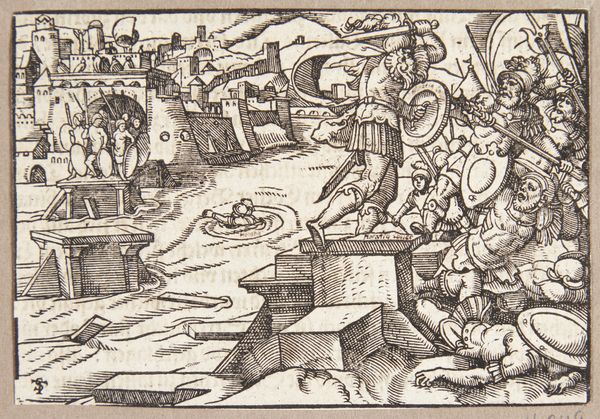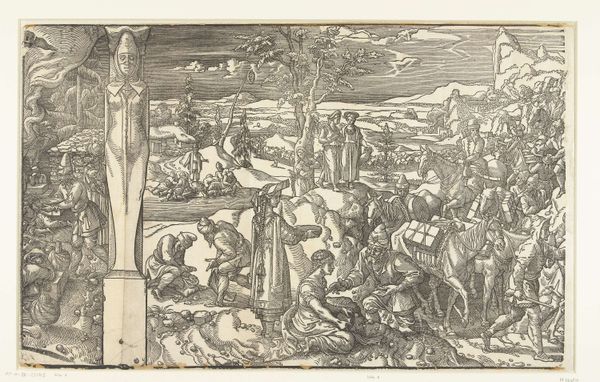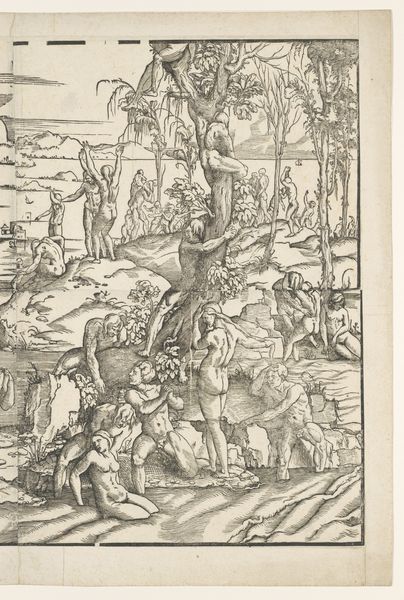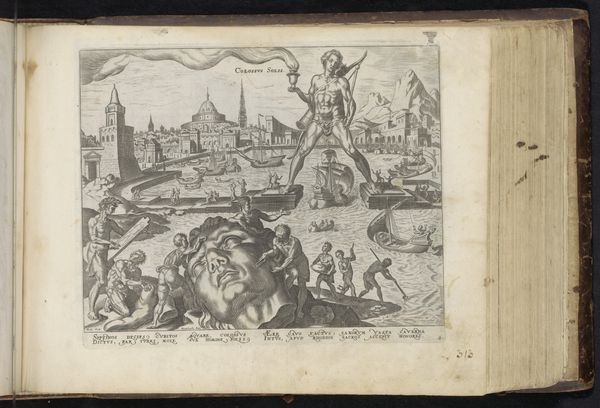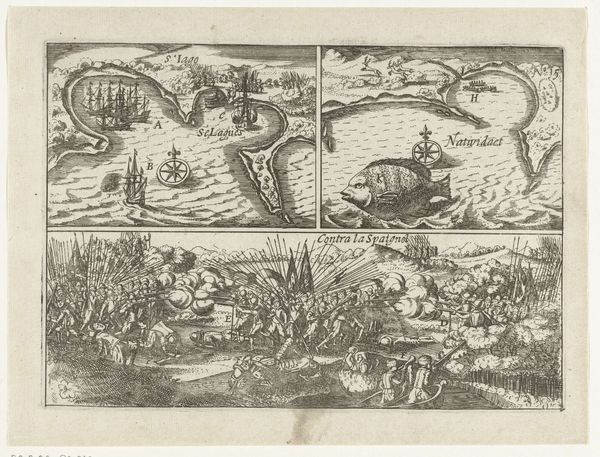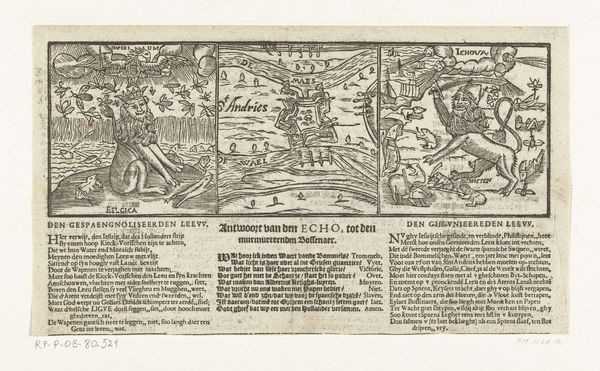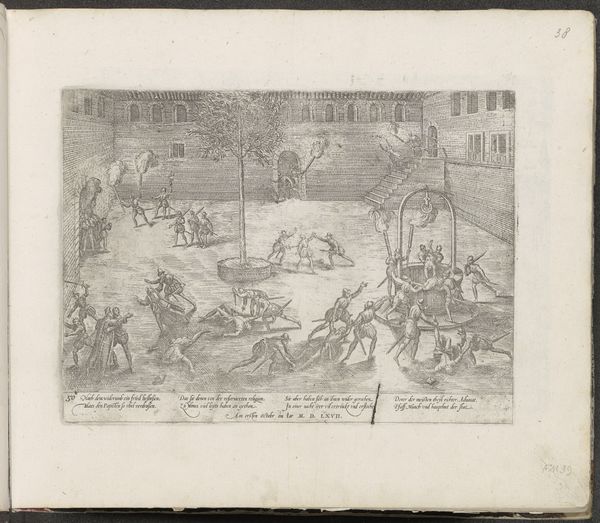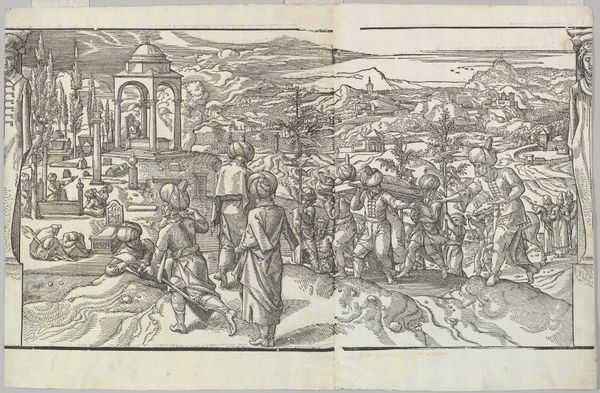
print, engraving
#
narrative-art
# print
#
figuration
#
line
#
history-painting
#
northern-renaissance
#
engraving
Dimensions: height 50 mm, width 70 mm
Copyright: Rijks Museum: Open Domain
Curator: Here we have an engraving from the period 1530 to 1533 titled "Sisak van Egypte rooft schatten uit de tempel," held here at the Rijksmuseum. It's an intriguing image with plenty of dynamic energy. Editor: My first impression is one of dramatic tension. The angel hovering above the soldiers, sword raised, creates a sense of impending doom. The use of stark lines intensifies the chaos of the scene. Curator: Indeed. Let's delve into the material aspects of this print. As an engraving, the labor involved in the production of these types of prints often involved collaborative workshops. The tools, like burins and engraving plates, were central to this production. Do you think such processes affect the narrative? Editor: Absolutely. Considering that this print is titled "Sisak van Egypte rooft schatten uit de tempel," which depicts Shishak looting treasures, the imagery seems aimed at highlighting conflict, while its creation points towards collaboration and division of labor, seemingly contrasting to the destructive behavior of looting depicted in the scene itself. The print as an accessible image, likely widely distributed, becomes a commentary itself, not just a depiction of history. Curator: Exactly. The act of looting, of course, speaks volumes about socio-economic power and cultural dominance, reflecting broader conflicts of the time. Editor: And don't forget how such a graphic print serves to inform public opinion and construct narratives of good versus evil, influencing popular perceptions of historical events and different groups involved. It is important that the image would have circulated and been received. Curator: I wonder about its function within religious and political discourse in the Netherlands. Did it serve a propagandistic purpose or offer some kind of social commentary? Editor: Most likely a blend of both. Prints had the ability to rapidly disseminate viewpoints during religious conflicts, but it likely found reception as an image documenting cultural theft as well, resonating differently with each individual in society depending on religious and class belonging. Curator: Very insightful. Reflecting on this work's place in history and material production certainly allows us to appreciate its complexity beyond simply documenting an event. Editor: Agreed. By contextualizing it within broader socio-political landscapes, we can grasp its full significance as both a reflection of and a contributor to the unfolding story of the early modern era.
Comments
No comments
Be the first to comment and join the conversation on the ultimate creative platform.
